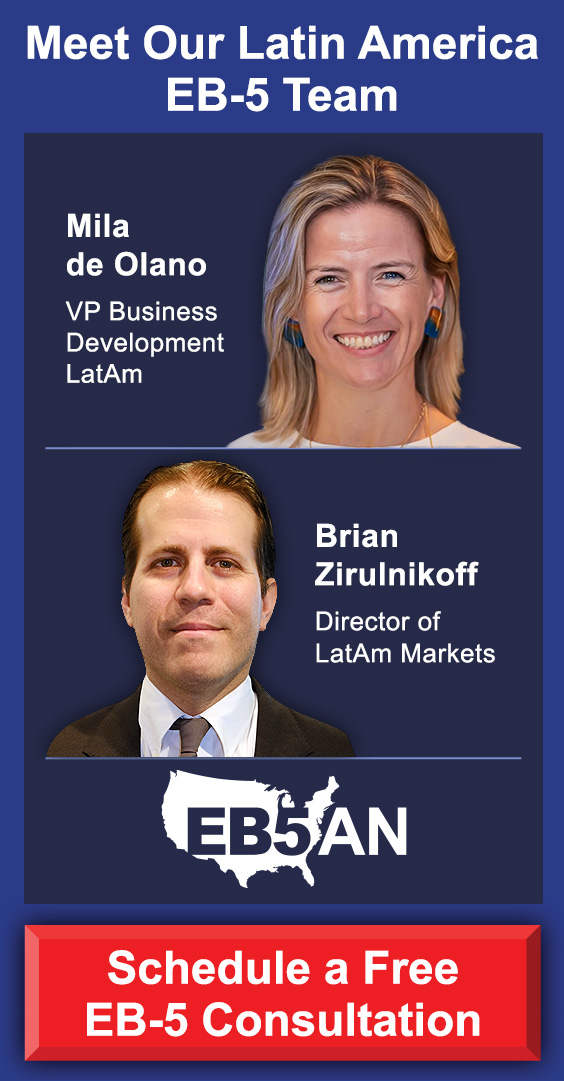The EB-5 Immigrant Investor Program, launched by the U.S. government in 1990, offers a unique pathway for international investors to gain lawful permanent residency in the United States. The program’s promise, a Green Card in exchange for a qualifying new commercial enterprise (NCE) that creates jobs in the U.S., has attracted thousands of investors worldwide.
However, beneath the surface of this opportunity lies a highly structured and regulated process involving multiple stakeholders. For EB-5 investors, it’s important to understand the roles and responsibilities of everyone involved in the transaction to manage the program’s complexities and protect their investment.
Understanding the EB-5 Framework
The Role of Regional Centers
The New Commercial Enterprise (NCE)
The Job-Creating Entity (JCE)
Legal Advisors
Economists and Business Plan Writers
Fund Administrators
Teamwork Drives Success
Understanding the EB-5 Framework
Before diving into the specific roles of each participant, it’s important to understand the broader structure of an EB-5 transaction, particularly under the regional center program, which channels EB-5 investments through USCIS-approved regional centers.
In a typical EB-5 deal, the investor places capital into an NCE. That NCE then deploys the funds, often in the form of a loan or equity investment, into a job-creating entity (JCE), which is responsible for executing a project that will generate the required number of jobs. Each of these entities is supported by a team of legal, financial, and compliance professionals who ensure the project meets both immigration and regulatory standards.
Let’s take a closer look at each of these key participants.
The Role of Regional Centers
Regional centers are the linchpin of many EB-5 transactions. These USCIS-designated entities act as intermediaries between EB-5 investors and job-creating projects. A regional center is not necessarily the developer or the fund manager, but it plays a critical role in sponsoring projects and facilitating indirect and induced job creation.
Regional centers are also responsible for maintaining ongoing compliance with USCIS rules and submitting annual reports (Form I-956G). They often collaborate closely with developers, economists, and legal teams to ensure the projects they sponsor meet EB-5 requirements.
For investors, working through a reputable regional center can offer more structured oversight and potentially lower risk, especially when compared to the direct EB-5 route.
The New Commercial Enterprise (NCE)
The NCE is the legal entity into which EB-5 investors contribute their capital. This entity can take the form of a joint venture, corporation, limited partnership, limited liability company, etc., and is managed by a general partner or managing member. The NCE is responsible for aggregating capital from multiple EB-5 investors and then deploying it to the job-creating business or project.
The NCE is central to the investor’s immigration petition. It must demonstrate that the required amount of capital was received and appropriately deployed, and that it led to the creation of at least 10 full-time jobs per investor. Regional center investors are usually limited partners or passive members of the NCE and do not participate in day-to-day operations.
The Job-Creating Entity (JCE)
The JCE is the operating business or project that actually receives the capital from the NCE and uses it to generate jobs. This could be any commercial enterprise expected to create the jobs required under the EB-5 rules.
It is the JCE’s responsibility to execute the business plan in a way that leads to the successful creation of at least 10 full-time jobs per EB-5 investor. Because job creation is the cornerstone of the EB-5 program, USCIS will scrutinize the JCE’s progress as part of the investor’s I-829 petition to remove conditions on permanent residence.
Legal Advisors
Two distinct but equally important legal roles exist in EB-5 transactions:
Immigration Counsel
Immigration attorneys guide investors and regional centers through USCIS requirements. For investors, immigration counsel assists with preparing and submitting Forms I-526E and I-829, which require detailed documentation of lawful source of funds, investment structure, and job creation.
Securities Counsel
Securities counsel plays a critical role in ensuring that the investment offering complies with U.S. securities laws. This legal team reviews offering documents such as the private placement memorandum (PPM), subscription agreements, and operating agreements to ensure they are clear, complete, and compliant. They also help structure the flow of funds to ensure that investor capital is protected and traceable.
While investors usually hire only immigration counsel, securities counsel is typically retained by the regional center or project sponsor rather than by individual investors.
Economists and Business Plan Writers
A robust economic impact analysis and comprehensive business plan are essential to the success of any EB-5 petition. Economists use accepted economic modeling techniques (like RIMS II or IMPLAN) to estimate the number of jobs a project will create, including direct, indirect, and induced jobs.
These job projections form the basis of the investor’s I-526E petition. A weak or flawed economic report can jeopardize an investor’s immigration process, even if the investment capital is otherwise sound.
Likewise, detailed and credible business plans, prepared in line with Matter of Ho guidelines, are necessary to demonstrate that the project is viable, well-planned, and capable of meeting the EB-5 program’s requirements. In the case of regional center projects, this aspect is typically handled by the regional center and investors do not need to take on this responsibility themselves.
Fund Administrators
Transparency and compliance are major concerns in the EB-5 space. Because of this, many projects now employ independent fund administrators or auditors to monitor the use of investor funds.
These professionals ensure that funds are handled according to the terms of the offering documents and are used solely for job-creating purposes. Regular reporting to investors and regional centers can offer a higher degree of comfort and reduce the risk of misappropriation or misuse of funds.
USCIS also places increasing emphasis on fund administration as part of program integrity measures.
Teamwork Drives Success
An EB-5 transaction is a complex orchestration involving legal, financial, operational, and regulatory considerations. For investors, understanding the roles of the various parties involved is essential not just for immigration success, but also for financial protection and peace of mind.
By working with experienced and transparent regional centers, supported by skilled legal and financial professionals, EB-5 investors can better position themselves for a successful outcome, achieving their American dream while contributing to economic development in the U.S.
At EB5AN, transparency is of the utmost importance to us. EB5AN has helped more than 2,700 families from 70+ countries become lawful permanent residents of the United States. Our team has more than a decade of experience and offers clients first-rate, low-risk EB-5 regional center projects with a 100% USCIS project approval rate.
If you would like to know more about your EB-5 investment options, book a free call with our expert team today.










